"pay attention to" 12 "implant teeth" must know items!

Dental implants repair missing teeth by using artificial roots (implants) to support artificial crowns (dentures).
The implant is like a small screw made of titanium, which can be firmly fixed in the jaw by combining closely with the surrounding tissue.
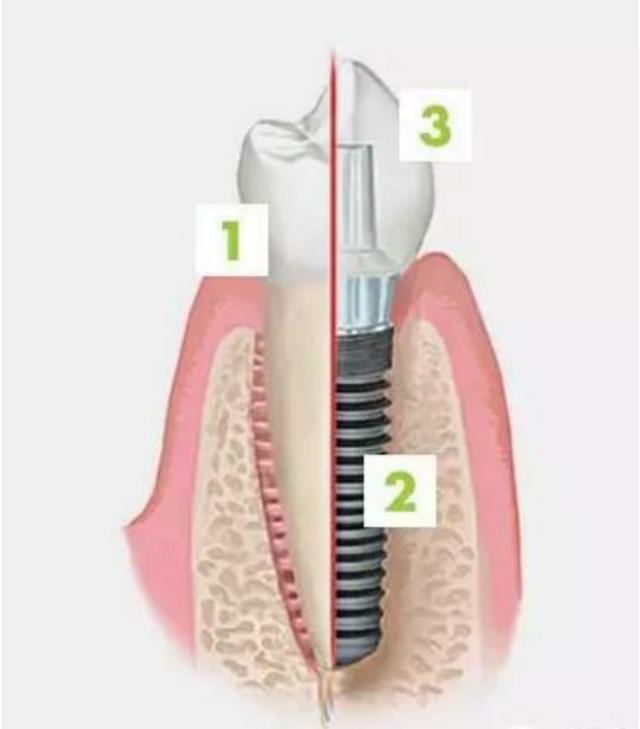
(figure 1. [1] Natural teeth, [2] implants, [3] artificial crowns)
Dentures are usually made of metal and ceramic materials.
There are two main stages of dental implant treatment: 1. Implant 2. To make dentures. The implant was implanted surgically under local anesthesia and the sutures were removed after about a week.
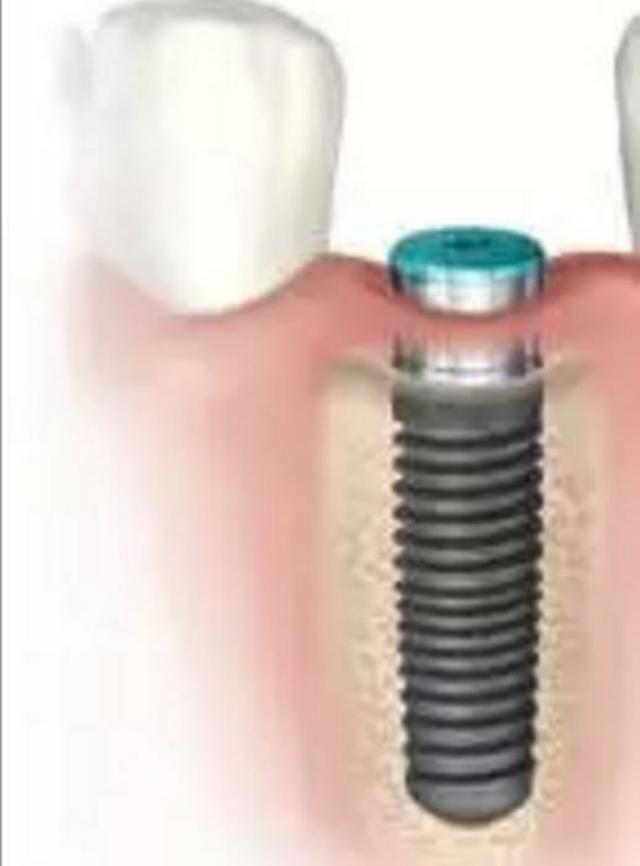
(figure 2. The process of dental implant healing in alveolar bone)
It usually takes 3-24 weeks for the implant to combine with the alveolar bone, which varies according to the individual condition and the type of implant. if the combination is good, you can begin to take oral molds and make dentures. After another 2 weeks or so, you can wear a denture.
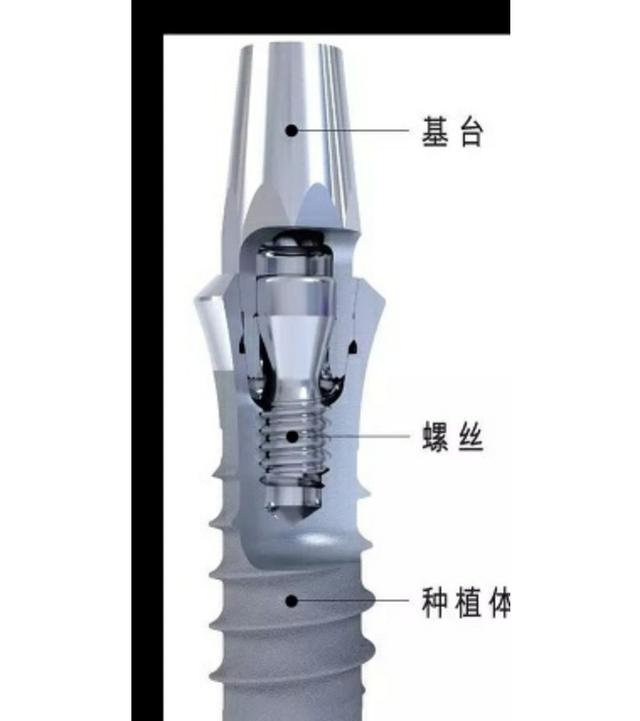
(figure 3. The internal structure of the implant: implant, abutment, fixing screw)
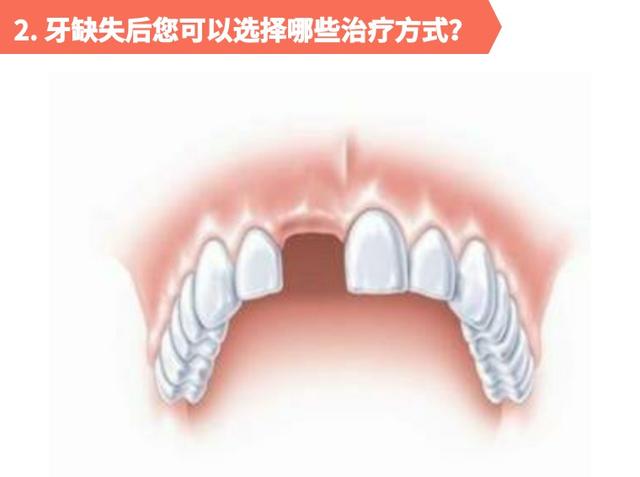
Missing teeth will not only affect your appearance and function, but also cause gingival atrophy, inclination of adjacent teeth and elongation of jaw teeth if it is not repaired for a long time.
Usually you have four main repair methods, each of which has its own indications and contraindications.
1. Implant tooth
Dental implants can replace single, multiple or full teeth.
Compared with conventional dentures, implant teeth have the following advantages: 1. The functions of support, retention and stability are good; 2. Avoid the damage of tooth tissue caused by grinding natural teeth; 3. The comfort is better.
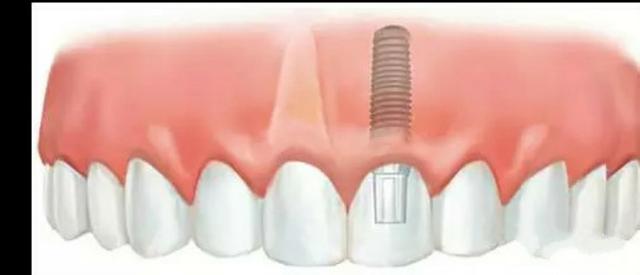
(figure 4. Use implant-supported crowns in the anterior area to replace a single tooth)
(figure 5. Replace multiple teeth with implant-supported bridge in the posterior area)
[figure 6. Various options for implant treatment of complete tooth loss ((1) fixed (2) bar clip removable denture (3) ball cap removable denture)]
2. Dental supported fixed denture
Fixed denture, also known as fixed bridge, is connected with artificial teeth through retainers, and binders are used to fix the natural teeth or roots at both ends or one end of the missing teeth space to repair missing teeth.
(figure 7. Fixed bridge)
This kind of denture requires grinding and cutting of natural teeth (sometimes under local anesthesia), but the comfort is good, there is no need for patients to wear it, and the functional and aesthetic recovery is better.
3. Dental supported removable partial denture
(figure 8. Removable partial denture)
This type of denture is supported by natural teeth and gums and can be removed repeatedly. However, the denture has large volume and many parts, and it often has a foreign body sensation when worn at the first time, which sometimes affects the pronunciation. Its stability and masticatory efficiency are not as good as the fixed denture, so it takes a certain time to adapt.
4. Complete denture
(figure 9. Traditional complete denture (removable denture)
Traditional complete dentures use gums and mucous membranes to provide retention. When the natural tooth is missing, the alveolar bone will be gradually absorbed, which will affect the stability of the denture and further affect your masticatory function and comfort. Dentures may need to be adjusted repeatedly to achieve satisfactory results. In this case, through the implant to support complete denture, the retention of denture can be effectively improved.
Dental implant has a history of more than 40 years and has been proved to be a safe and effective method for the treatment of missing teeth. Nowadays, the implant can achieve ideal osseointegration after alveolar bone implantation (the success rate is more than 98%).
Titanium, the material for making implants, has good biocompatibility, which is why the implant can be closely combined with bone tissue, and its metal toxicity is minimal. Cases of allergy or rejection to titanium are very rare.
(figure 10. The anatomical structure that may affect the surgical operation of the implant.
However, after all, implant implantation is a kind of operation, which needs to be considered according to the patient's whole body condition before operation. For example, if you have high blood pressure, if your blood pressure is not controlled smoothly before surgery, you need the joint efforts of a specialist and a stomatologist before you can perform dental implant surgery.
In terms of the implant itself, the location and shape of some important structures in your maxillofacial region (such as the mandibular nerve, maxillary sinus) will increase the risk and difficulty of the operation. In order to avoid injury to these important structures due to surgery, we require you to take X-rays before surgery as a reference, so that dentists can combine these materials with you to analyze the risk of the operation.
Most healthy people can receive dental implant treatment. In particular, we want you to have clean and healthy oral hygiene before dental implant treatment. This is because dental plaque deposition and gingivitis caused by poor oral hygiene will affect the success rate and service life of dental implants.
There are other situations that may indirectly affect the success rate of dental implant treatment. We hope that when you consult your dentist, you will be informed of your current physical condition, whether you are taking medication, the degree of smoking and so on.
For example:
If you have diabetes, we strongly recommend that you strictly control your blood sugar before seeing a doctor.
Smoking also increases the risk of dental implant complications. In order to achieve better results, we recommend that you quit smoking or reduce smoking before you plan to implant teeth.
Periodontal disease is also one of the factors leading to complications after implantation. Therefore, we strongly recommend that you complete the relevant periodontal treatment and maintain oral hygiene before receiving dental implant treatment.
(figure 11. Gingival atrophy after tooth extraction)
As mentioned earlier, the location and shape of some important structures (such as the mandibular nerve and maxillary sinus) will affect the location of the implant. In some patients, the alveolar bone atrophy is more serious, which will also lead to not enough alveolar bone to support the implant, which increases the difficulty of the operation. Sometimes, although there is a sufficient amount of alveolar bone, the bone is very sparse, which can also affect the efficiency of implant and bone union.
X-rays usually help to confirm the quality and residual amount of alveolar bone, and if the bone mass is not enough, you also need to undergo incremental bone surgery before or at the same time as the implant.
The process and timing of treatment vary from person to person, and your own oral conditions and your requirements for implant results will affect the entire treatment plan. Usually, the treatment time for simpler cases is 1-3 months. however, some complex cases may take more than a year.
(figure 12. General procedure of dental implant treatment)
After your first consultation, the dentist will provide you with treatment options, including the number of visits and cycles that may be required. Usually, dental implants can be performed if your oral hygiene meets certain requirements. If you have periodontal disease, dental caries, periapical disease, etc., you may need to complete these treatments before you can perform implant surgery.
General implant therapy is divided into two parts, implant surgery and crown restoration. If you still need to have your teeth extracted when you see a doctor for the first time, it usually takes 6-12 weeks for dental implants to be performed after extraction. There are some special conditions that can be implanted on the day of tooth extraction (called immediate implant), which requires you to have the appropriate oral conditions.
After the implant is implanted, it takes about 3-12 weeks to combine closely with the alveolar bone before the crown can be made. Usually, it takes 1-3 weeks to complete the crown, which varies according to the processing requirements. In short, the whole treatment process requires you to revisit many times. There are also some special situations where you can wear a crown on the day of implant implantation (called immediate weight-bearing), but this also requires you to have the appropriate oral conditions.
The implant surgery will be performed under effective local anesthesia and you will not feel pain.
After surgery, due to the failure of the anesthetic, you may have a certain degree of discomfort, which varies from person to person, and is generally temporary and controllable.
The pain after surgery can be controlled by taking painkillers (such as paracetamol). According to our clinical study (a total of 63 patients), if it is a simple implant surgery, about half of the patients need to take painkillers on the first day after the operation, 1/4 of the patients need to take painkillers until the fourth day after the operation, and on the sixth day after the operation, only 5 patients claim to take painkillers.
The common clinical discomfort mainly comes from swelling, pain, hematoma and bleeding. Some other serious complications caused by surgery occur occasionally, but they are very rare.
The following is from our clinical observation of postoperative swelling and pain:
(figure 13. Patients perceived postoperative swelling-0-10 self-rating scale (no swelling-swelling was very obvious), from the first day after operation to the 14th day after operation)
Implant surgery (63 patients) = usually a relatively simple, simple implant surgery
Bone increment in the same period of implant surgery (70 patients) = guided bone regeneration during implantation.
(figure 14. Patients perceived postoperative pain-0-10 self-rating scale (no pain-pain was very obvious), from the first day after operation to the 14th day after operation)
Implants need a healthy and clean oral environment.
Usually, prevention is more effective than treatment, and we recommend that you go to the hospital at least once a year to check the health of the soft tissue around the implant and the use of dentures. A dentist or dental cleaner will help you clean and maintain oral hygiene. If the cleaning is not in place, the dentist or dental cleaner will ask you to come back many times.
We also hope that you can clean your mouth with quality and quantity, brushing your teeth twice a day, gargling and using dental floss and gap brushes are the most basic requirements. Because the structure of the implant is different from that of natural teeth, sometimes you need some specific cleaning tools.
(figure 15. Clean with dental floss)
(figure 16. Clean with a special gap brush)
Implant dentures can replace a single tooth, multiple teeth, or a whole row of teeth. Correct implantation and restoration will make the implant teeth show a satisfactory aesthetic effect. At present, advanced clinical techniques and materials have been able to achieve satisfactory aesthetic results of implant restoration. In general, there is no difference between implant teeth and real teeth, and it is difficult to tell the difference between true and false teeth.
(figure 17. Dental implant to repair the loss of a single anterior tooth)
(figure 18. Dental implants to repair the missing teeth of the upper and lower jaw)
The dentist will reconstruct and beautify your mouth according to your own conditions. Your own condition generally refers to the quality and quantity of bone and soft tissue around the implant. Some cases of soft tissue deficiency (for example, gingival defect) may require soft tissue transplantation (for example, a piece of mucous membrane from the palate) to achieve ideal aesthetic results. In some cases, better repair results may be achieved only by reducing aesthetic requirements, which needs to be taken into account.
At present, there are some tools that can help the dentist understand the factors that may affect the aesthetic effect of your mouth, and the dentist will discuss the treatment with you accordingly. If beauty is your main requirement, you can tell the dentist to make the plan as a major factor.
The root of the simulated real tooth is fixed in the alveolar bone to support the crown to perform the normal masticatory function. Therefore, in general eating, in terms of function and comfort, you will not feel any difference between implant teeth and real teeth.
But unlike implants, real teeth are surrounded by a layer of periodontal ligament tissue, which is a natural stress-sensing organ. Although you can't feel it yourself, this layer of periodontal ligament can feel the occlusal force and transmit it when you are chewing, thus regulating and protecting real teeth. This function disappears after the extraction of the real tooth, so without this protective mechanism, the implant cannot feel and disperse too much pressure, and strictly speaking, its function cannot be exactly the same as the real tooth.
The crown of the implant is made of ceramic, metal and other materials. Usually after a few weeks of use, you will get used to it and will not feel the difference between it and real teeth.
If it is a removable partial denture or complete denture supported by implants, the denture can also achieve ideal stability through the implant. However, the restoration area of complete denture is usually large, which will affect your taste and comfort to some extent.
Dental implants have a high success rate. Although it is still a relatively novel treatment in the history of dentistry, available data show that the longest-used dental implants have been used for more than 40 years, and 97% of the implants (Stroman ITI) have been used for more than ten years and still function well.
The reasons that affect the service life of implants are mainly divided into two parts. The first part occurs on mechanical materials (fixed screws, abutments, ceramics, etc.), and implants may appear in about 5-10 years, such as screw loosening and ceramic material wear.
The other part occurs in the tissue around the implant (for example, inflammation of the tissue around the implant due to infection). Once this chronic inflammation occurs, it is more difficult to deal with. Therefore, we emphasize that prevention is more important than treatment, and effective cleaning and maintenance of the oral cavity after surgery is very important.
Like real teeth, implants are sensitive to inflammation caused by bacterial infections and require good oral hygiene.
In particular, you need to pay attention to cleaning the gap between the teeth and the implant, as there is often an accumulation of food residue. We recommend that you use dental floss or some special space brushes.
(figure 20. In a case of peri-implant inflammation, the bone around the implant can be seen to disappear on X-ray.
According to your specific situation, the dentist will also make some oral cleaning plans after the operation. We hope you will have a revisit at least once a year after dental implants. If you have periodontal disease, your dentist may ask you to come back every 3-6 months.
Smoking increases the risk of infection after surgery and may further cause bone resorption around the implant. Therefore, we recommend that you quit smoking or reduce smoking.
Although the implant can be well combined with alveolar bone, there are still some complications after implant implantation, most of which can be effectively controlled by early detection and early treatment.
This article: the pictures and texts are all from the network, summarized and sorted by Yakangbao, only for sharing, the copyright belongs to the original author, if there is any infringement, please contact to delete.
For more wonderful content, please click to follow!
- Prev

How to grow cornflower, cornflower planting method
Cornflower is a wild flower, after years of cultivation, its "wild" sex less, flowers become larger color become more, purple, blue, light red, white...
- Next
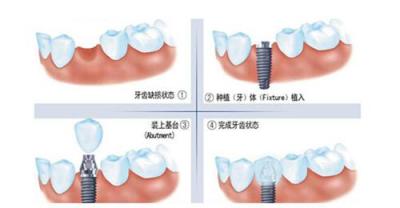
Choose the right planting expert and plant rest assured teeth!
Tooth loss should be repaired in time recently, Huamei Dental Dental Hospital successfully completed a full-mouth implant. It is understood that the patient, Mr. Wang, 34, has been neglected for a long time.
Related
- Fuxing push coffee new agricultural production and marketing class: lack of small-scale processing plants
- Jujube rice field leisure farm deep ploughing Yilan for five years to create a space for organic food and play
- Nongyu Farm-A trial of organic papaya for brave women with advanced technology
- Four points for attention in the prevention and control of diseases and insect pests of edible fungi
- How to add nutrient solution to Edible Fungi
- Is there any good way to control edible fungus mites?
- Open Inoculation Technology of Edible Fungi
- Is there any clever way to use fertilizer for edible fungus in winter?
- What agents are used to kill the pathogens of edible fungi in the mushroom shed?
- Rapid drying of Edible Fungi

